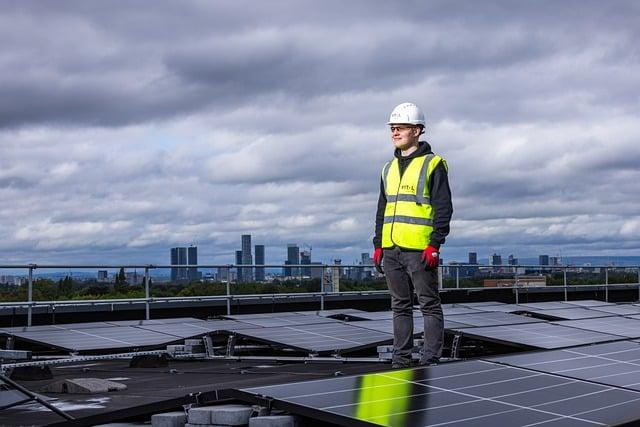- Introduction
- Benefits of Solar Energy
- Applications of Solar Energy
- How Solar Panels Work
- Cost Considerations
- Conclusion
- FAQs
Introduction
In recent years, there has been a growing interest in harnessing renewable sources of energy, with solar power leading the way. Solar energy is abundant, clean, and sustainable. In this article, we will explore the benefits of solar energy, its applications, how solar panels work, cost considerations, and ultimately, why solar energy is a crucial component of our future energy landscape.
Benefits of Solar Energy

(Image: Pixabay/@This_is_Engineering)
Solar energy offers numerous benefits both for individuals and the environment. Firstly, it is a renewable source of energy – sunlight is inexhaustible. It helps to reduce electricity bills significantly, especially over the long term. Solar power also reduces dependence on nonrenewable fossil fuels, decreasing greenhouse gas emissions and combating climate change. Additionally, solar panels require minimal maintenance and have a lifespan of 25-30 years, making them a cost-effective investment in the long run.
Furthermore, solar energy can create independence from the grid, providing energy security during power outages or emergencies. It can also lead to job creation in the solar industry, contributing to economic growth. The environmental benefits of solar energy cannot be overstated, as it helps to preserve natural resources and protect ecosystems for future generations.
Applications of Solar Energy

(Image: Pixabay/@jamal39)
Solar energy has a wide range of applications across various sectors. Residential homes can utilize solar panels to generate electricity and hot water for domestic use. Commercial buildings can benefit from solar power to reduce operating costs and demonstrate commitment to sustainability. In agriculture, solar energy can power irrigation systems and provide electricity to off-grid farms, increasing productivity and efficiency.
Moreover, solar energy plays a crucial role in the transportation sector, facilitating the shift towards electric vehicles powered by clean energy. Solar-powered lights, street lamps, and traffic signals contribute to energy savings and enhance safety in public spaces. The versatility of solar energy makes it a versatile and scalable solution for diverse energy needs.
How Solar Panels Work

(Image: Pixabay/@Bru-nO)
Solar panels are composed of photovoltaic cells that convert sunlight into electricity through the photovoltaic effect. When photons from sunlight strike the semiconductor material within the solar cells, they knock electrons loose, creating an electric current. This direct current (DC) is then converted into alternating current (AC) by an inverter, enabling the electricity to be used in homes or fed back into the grid.
Solar panels are typically mounted on rooftops or ground-mounted in areas with ample sunlight exposure. The angle and orientation of the panels are critical for optimal energy generation. Advances in solar panel technology, such as thin-film solar cells and bifacial panels, continue to improve efficiency and performance, making solar energy an increasingly viable option for power generation.
Cost Considerations

(Image: Pixabay/@andreas160578)
While the initial cost of installing solar panels may seem high, the long-term savings and benefits far outweigh the investment. The prices of solar panels have significantly decreased over the years, making solar energy more accessible to homeowners and businesses. Various financing options, such as solar loans and leases, help make solar installations affordable and attainable for a wider range of consumers.
The return on investment (ROI) for solar panels can be substantial, with savings on electricity bills and potential incentives or tax credits offered by governments to promote renewable energy adoption. It is essential to consider factors such as location, system size, and energy consumption patterns when determining the cost-effectiveness of solar energy installations.
Conclusion
Solar energy represents a promising and sustainable solution to the global energy transition. Its numerous environmental, economic, and social benefits make it a vital component of a clean energy future. By harnessing the power of the sun, we can reduce carbon emissions, mitigate climate change, and create a more resilient energy infrastructure for generations to come.
FAQs
Are solar panels suitable for all geographic regions?
Solar panels are most effective in regions with abundant sunlight. While they can still generate electricity in less sunny areas, their efficiency may vary based on local climate conditions.
What is net metering, and how does it work with solar energy?
Net metering allows solar panel owners to sell excess electricity generated by their system back to the grid, receiving credits on their electricity bill. This incentivizes solar energy production and promotes the adoption of renewable energy sources.
Do solar panels require maintenance?
Solar panels are generally low maintenance, requiring periodic cleaning to ensure optimal performance. Checking for shading, debris accumulation, and any potential damage is recommended to maximize the lifespan and efficiency of solar installations.

